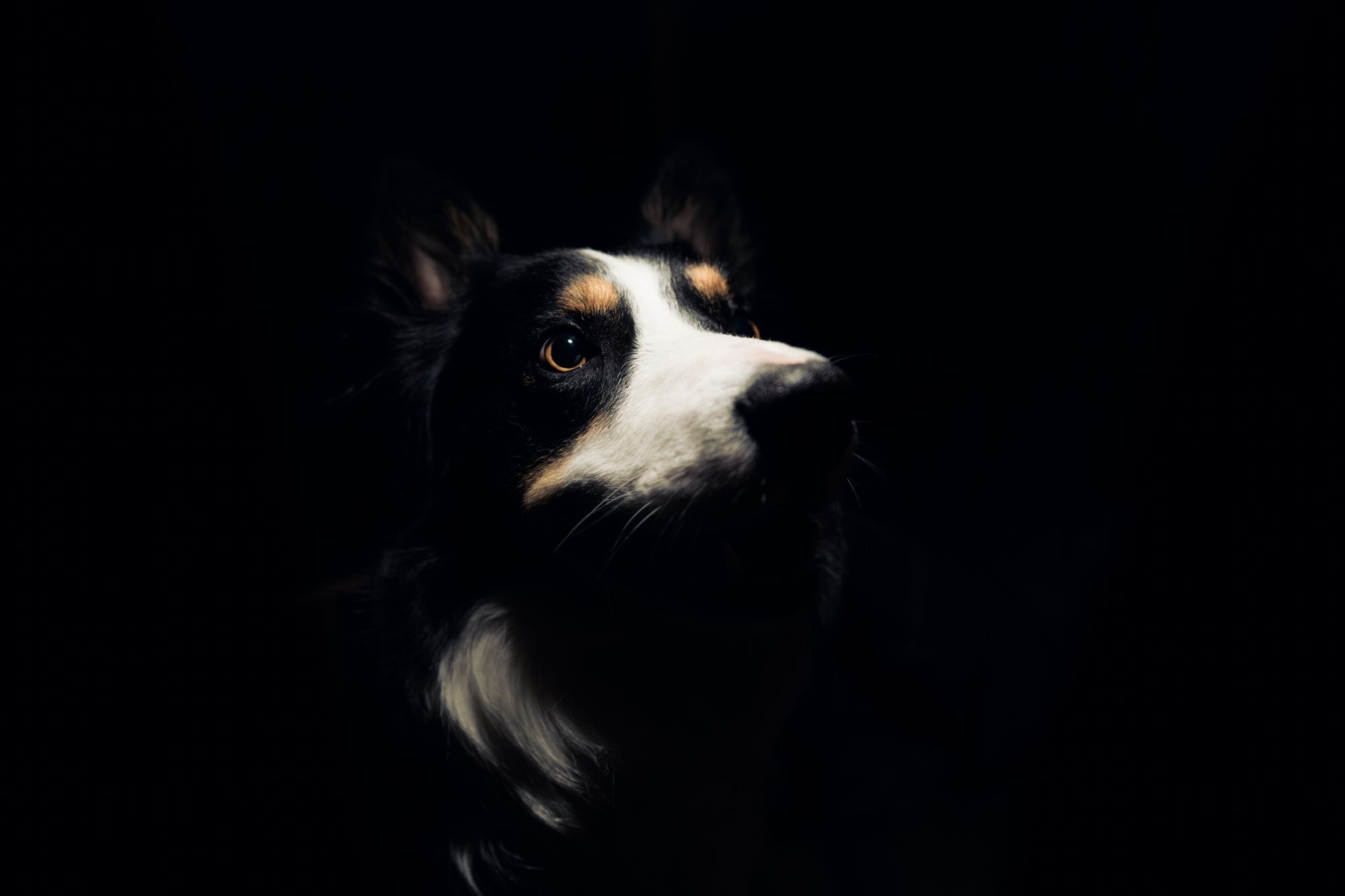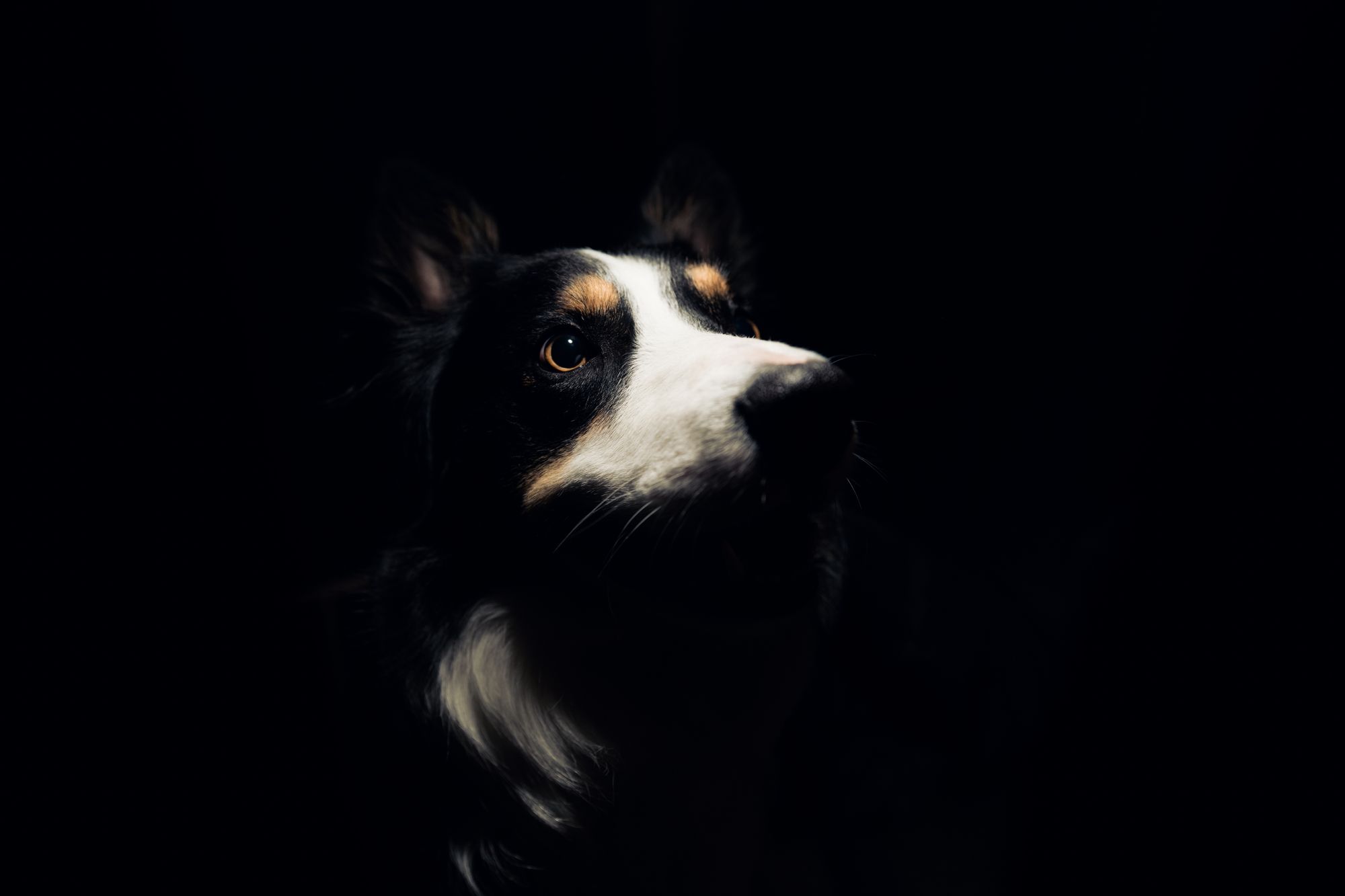
Have you ever wondered if your canine companion can navigate in the dark with ease? Dogs have always captivated us with their exceptional senses, and their vision is no exception. Here, we will explore the fascinating world of a dog's eyesight and delve into their ability to see in low-light conditions.
Dogs have evolved alongside humans for thousands of years, developing distinctive traits and abilities. Their visual system is specially adapted to accommodate their hunting and survival instincts, including the ability to see in dim lighting. Understanding how dogs perceive the world around them can shed light on their behavior and deliver valuable insights for pet owners.
Anatomy of a Dog's Eyes
To understand how dogs perceive the world in dim lighting, let's first examine the anatomy of their eyes. While similar to human eyes, there are a few key differences. Dogs have a larger cornea, which is the transparent outer layer of the eye, and a structure called the tapetum lucidum. The tapetum lucidum is a reflective layer located behind the retina. It acts like a mirror, reflecting light back through the retina and giving it a second chance to be detected by the photoreceptor cells. This reflection enhances a dog's sensitivity to low levels of light and contributes to their ability to see in the dark.
In addition to the tapetum lucidum, dogs have other adaptations that aid their night vision. Their pupils can dilate widely, allowing more light to enter the eye. This dilation helps in capturing any available light and improves their vision in low-light environments.
Vision in Low Light Conditions
1. Adaptations for Night Vision
Dogs possess several adaptations that enhance their ability to see in the dark. The structure of their eyes, with a larger cornea and a reflective tapetum lucidum, allows for better light gathering. These adaptations help dogs make the most of the limited light available in low-light situations.
2. The Role of Tapetum Lucidum
The tapetum lucidum is a crucial component of a dog's night vision. It reflects and amplifies any available light, increasing a dog's sensitivity to dimly lit environments. This is why you might notice a glowing effect, often referred to as "eye shine," when light is directed toward a dog's eyes in the dark.

3. How Dogs See in Dim Light
Dogs rely on specialized cells in their retinas called rods for vision in low-light conditions. Rods are highly sensitive to light but do not perceive color. This means that while dogs may have reduced color perception in the dark, they have a significant advantage when it comes to detecting movement and navigating their surroundings.
The combination of the tapetum lucidum, dilating pupils, and rod cells allows dogs to see relatively well in low-light situations. Although they may not have the same level of visual acuity as humans in well-lit environments, their night vision is a remarkable adaptation that aids them in various activities.
Comparing Dog Vision to Human Vision
To better understand a dog's night vision, it's essential to compare it to human vision. While humans have more advanced color vision and a sharper focus, dogs excel in their ability to see motion and detect objects in low light. This fundamental difference is attributed to variations in the distribution of rods and cones in their retinas.
1. Rods and Cones
Dogs have a higher proportion of rods, which are responsible for low-light vision, whereas humans have a higher concentration of cones, enabling us to see color and detail more effectively in well-lit environments. This discrepancy highlights the evolutionary trade-offs between different visual capabilities.
2. Color Perception
Although dogs have limited color vision compared to humans, their ability to see in shades of blue and yellow is still present. The world may appear less vibrant to them, but their visual acuity in low light compensates for this deficiency.
3. Field of View
Dogs have a wider field of view than humans, enabling them to detect movement from various directions. This panoramic vision is particularly advantageous in the dark when peripheral awareness becomes vital for survival.
Factors Affecting a Dog's Night Vision
While dogs have natural night vision capabilities, there are several factors that can influence their ability to see in the dark. Let's explore some of these factors:
1. Breed Variations
Different dog breeds may exhibit variations in their night vision capabilities. Nocturnal hunting breeds, such as the Long Haired German Shepherd or the Siberian Husky, often possess superior night vision compared to breeds with a primarily diurnal lifestyle.
2. Age and Eye Health
Similar to humans, a dog's night vision can be affected by age and overall eye health. Older dogs may experience a decline in their night vision due to natural aging processes. Additionally, certain eye conditions like cataracts, glaucoma, or progressive retinal atrophy can impair a dog's ability to see in low-light environments.
3. Training and Experience
Training and exposure to low-light conditions can also influence a dog's night vision. Dogs that are regularly exposed to dark environments or trained for specific tasks in low light, such as search and rescue or police work, may develop heightened night vision capabilities. Their visual acuity and ability to navigate in the dark can improve with practice and experience.
4. Available Light Sources
The presence or absence of light sources in the environment can impact a dog's night vision. Dogs rely on available light to see, even though they have better sensitivity in low-light conditions compared to humans. In complete darkness, their vision may be significantly impaired. Providing some ambient or artificial light can enhance their ability to see and move around in the dark.

5. Eye Structure and Individual Variations
Individual variations in eye structure can also affect a dog's night vision. Dogs with larger corneas and tapetum lucidum may have better light-gathering capabilities and improved night vision. Additionally, genetics and overall health can play a role in determining the quality of a dog's night vision.
Understanding these factors can help dog owners recognize the potential variations in night vision capabilities among different breeds and individual dogs. If you have concerns about your dog's night vision or notice any changes in their ability to see in low-light conditions, consulting with a veterinarian can provide valuable insights and guidance.
Common Myths About Dogs' Night Vision
Let's debunk some common misconceptions regarding a dog's night vision:
1. Dogs Can See Perfectly in Pitch-Black Darkness
Contrary to popular belief, dogs cannot see with absolute clarity in pitch-black darkness. While their night vision is superior to humans, they still rely on available light sources to perceive their surroundings.
2. Dogs Can See Ghosts or Spirits
Although dogs may exhibit unusual behavior in certain situations, they do not possess the ability to see supernatural entities that are invisible to humans. Their reactions may be attributed to heightened senses or unfamiliar stimuli.
3. Dogs Can Detect Invisible Things in the Dark
While dogs can detect certain scents and sounds that are imperceptible to humans, they cannot see objects that are genuinely invisible. Their visual perception is limited to the range of light visible to their eyes.
Enhancing a Dog's Night Vision
While dogs have natural abilities for night vision, there are steps you can take to enhance their visual capabilities in low-light conditions.
1. Proper Nutrition
Providing a balanced and nutritious diet is essential for maintaining good overall eye health. Including foods rich in omega-3 fatty acids, antioxidants, and vitamin A can support optimal vision in low-light conditions. Consult with your veterinarian to ensure your dog's diet includes the necessary nutrients for healthy eyes.
2. Regular Eye Exams
Just like humans, dogs can develop eye conditions that may affect their vision, including night vision. Regular veterinary eye exams can help detect any potential issues early on. Prompt treatment of conditions such as cataracts, glaucoma, or retinal diseases can help preserve your dog's night vision and overall eye health.
3. Regular Exercise and Mental Stimulation
Regular exercise and mental stimulation are crucial for your dog's well-being, including their eyesight. Physical activity helps improve blood circulation, which is beneficial for the eyes. Mental stimulation through interactive games, puzzle toys, and training exercises keeps their minds sharp and promotes overall brain health, indirectly benefiting their vision.
4. Environmental Enrichment
Creating an enriched environment for your dog can stimulate their senses, including their vision. Provide opportunities for visual exploration, such as walks in different environments, exposure to various sights and sounds, and even introducing safe and interactive toys that engage their vision. This helps keep their visual system active and responsive.

5. Regular Veterinary Check-ups
Routine veterinary check-ups are important to monitor your dog's overall health, including their eyesight. Regular eye exams can detect early signs of eye conditions or diseases that may impact their vision. Timely intervention and treatment can help preserve and improve their eyesight.
6. Protect from Harmful Factors
Protecting your dog's eyes from harmful factors can prevent potential damage and maintain their eyesight. Avoid exposing them to harsh chemicals, irritants, or foreign objects that may cause injury or irritation to the eyes. If your dog spends time outdoors, consider using doggy goggles or protective eyewear to shield their eyes from UV rays, debris, and other potential hazards.
7. Avoid Overexposure to Screens and Bright Lights
Excessive exposure to screens, such as TVs, computers, or smartphones, can strain your dog's eyes, just as it can with humans. Limit their exposure to screens and avoid placing them in direct, intense light. Maintaining a comfortable and dimly lit environment can help reduce eye strain and promote better eyesight.
By implementing these practices, you can support your dog's eye health and potentially improve their eyesight. However, it's important to remember that individual factors, genetics, and existing conditions can also play a role in a dog's eyesight. Regular veterinary care and consultation are essential for personalized guidance and tailored recommendations for your dog's specific needs.
Final Thoughts
In conclusion, dogs have remarkable adaptations that enable them to see in the dark. Their larger corneas, reflective tapetum lucidum, and specialized rod cells contribute to their ability to navigate in low-light conditions. While dogs may not see with the same clarity as humans in the dark, they excel at detecting movement and have a wider field of view.
Understanding the anatomy and capabilities of a dog's eyes can help us appreciate their unique visual abilities. By ensuring proper nutrition, regular eye exams, and providing adequate lighting, we can help enhance a dog's night vision and overall eye health.
Remember to consult with your veterinarian for personalized guidance regarding your dog's specific needs and to address any concerns about their vision or eye health.
FAQs
Here are some frequently asked questions about a dog's ability to see in the dark:
1. Q: Can dogs see better than humans in complete darkness?
A: Dogs have superior night vision compared to humans, but they still require some level of available light to see clearly in the dark.
2. Q: Do all dog breeds have the same night vision capabilities?
A: No, certain dog breeds may have better night vision due to their genetic makeup and ancestral traits.
3. Q: Can my dog navigate in the dark without any light sources?
A: While dogs can navigate in low light conditions, providing adequate lighting can help them feel more comfortable and confident.
4. Q: Is it true that dogs can see in color?
A: Dogs have limited color perception compared to humans but can still distinguish between shades of blue and yellow.
5. Q: Can training improve a dog's night vision?
A: Training and exposure to low light conditions can enhance a dog's ability to see in the dark, but their inherent night vision capabilities remain unchanged.
These FAQs aim to provide a better understanding of a dog's night vision capabilities and shed light on common inquiries related to their vision in low-light conditions. Remember that individual dogs may vary in their specific abilities, and it's always best to consult with a veterinarian for personalized advice regarding your dog's vision and overall health.

